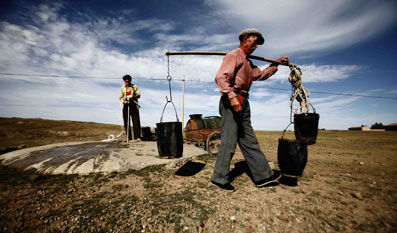(Ecns.cn) – Excessive exploitation of underground resources continues to create environmental hazards in China, with cases of land subsidence, sinkholes and earth fissures more frequently occurring and posing tremendous threats to the country's urban development.
Over-extraction of groundwater has already turned the North China Plain into the world's largest "funnel" area, involving an area of 73,288 square kilometers and accounting for 52.6% of the region, reported Time Weekly.
In metropolises such as Beijing, Shanghai, Guangzhou and Shenzhen, the solidity of the ground is also largely affected by the utilization of underground space, which has resulted in the sinking of ground levels and cracks at the surface.
Meanwhile, areas of the most rapid urbanization maintain huge demands for energy and raw materials. In a report cited by China New Service (CNS), about 5 billion tons of minerals are being exploited in China every year, which can destroy the balance of the lithosphere and result in the collapse of mining areas.
Water extraction sinks North China Plain
On October 24, 2011, CNS reported that Cangzhou, a city in North China's Hebei Province, had experienced 2.4 meters of land subsidence in the past 40 years.
The problem has been so severe that an inpatient building of the Cangzhou People's Hospital, which was once a three-story building, was gradually reduced to two stories before being torn down and turned into a fountain.
In the North China Plain, more than 2 million deepwater wells pump groundwater every day, even as statistics reveal a groundwater deficit of about 120 billion cubic meters, according to China Daily.
Recent investigations show that there are more than 300 regions involved in the over-extraction of groundwater, covering a total area of 190,000 square kilometers, according to Yu Qiyang, deputy director of the Water Resources Development Department under the Ministry of Water Resources, during a news briefing on October 28.
Among them, the North China Plain is one of the worst-affected regions, and is now the world's largest area of land subsidence.
Since the 1980s, Beijing, Tianjin and Tanggu have extracted more than 600 million cubic meters of water over the accepted level every year, according to the Chinese Academy of Geological Sciences. In 2010, 50% of Beijing's water supply came from underground sources.


















